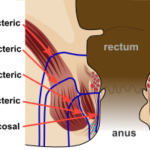As you get older, you’ll notice that it becomes more challenging to build muscles even when working out as intensely as always. It gets harder to gain muscle with age due to decreased testosterone levels. Testosterone decline consequently leads to a loss in muscle mass and strength. This is a natural condition known as sarcopenia.
You can stave off sarcopenia, retain your muscle mass, and even build more after 50. Doing strength training is key. But first, let us understand sarcopenia and why it happens.
Why muscle mass declines with age
Muscle mass peaks at around age 40 and begins to decline. Although it’s a natural course due to low T, other factors influence it.
One of these factors leading to muscle mass decline is lack of exercise. As people get older, they tend to become more sedentary. They engage in less activity, leading to a loss of accumulated muscle mass. That can also contribute to weakening.
But it’s a vicious cycle, really. The body system gets weaker and less tolerant with age. Because of that, older adults become averse to strenuous exercises like strength training. And lack of exercise, in turn, aggravates the loss of muscle and strength. And on and on it goes.
So the key to breaking that vicious cycle of sarcopenia is to do strength training. However, most older adults will need a testosterone boost since it regulates muscle and strength. You need to get yourself back to your optimum level of testosterone to build muscles more easily. Thankfully, you can achieve that through testosterone replacement therapy (TRT).
Muscle mass generally declines with age simply because we do nothing to stop it.
Why you must stop sarcopenia to maintain optimum health
Nature runs its course, but to our detriment.
As you age, you become more prone to certain diseases. Your body gets weaker. It’s nature leading you to your final day. But should you sit and wait till that day comes?
The decline in testosterone levels and muscle mass affects your well-being in several ways. First, muscle burns calories more than fat. So when you lose muscle, your metabolic rate declines (how many calories your body burns per time). This gives way for fat to accumulate, replacing the muscle. And the more fat you gain, the further your metabolic rate declines. Another vicious cycle!
Sadly, this fat gain due to age is mostly felt around the midsection. That’s why older adults grow bigger around their stomachs. Belly fat is dangerous to health as it increases the risk of cardiovascular diseases.
Physically inactive people lose 3-5% of muscle mass each decade after 30
You have seen how age makes us weaker, reducing our willingness to exercise, thereby aggravating the loss of strength and muscle. Physically inactive older adults can lose up to 3-5% of muscle mass each decade after age 30. And testosterone drops by 1% each year as we cross 30. This natural decline makes it harder to gain muscle, even when you do your regular training.
Can you still gain muscle after 50?
Now here’s the question. Since age causes a natural decline in muscle mass, can you still build muscles after crossing 50? The answer is YES, you can. According to one study, you can stave off sarcopenia and build muscle with about 40 minutes of strength training twice weekly. In the study, the rate of muscle gain was the same for young adults, middle-aged adults, and older adults.
We are told to listen to our bodies: when you feel tired, get some rest. But now is the time to violate that rule — for your good. Rather than listen to your body telling you it’s weak, it’s best to go out there and train. Even though building muscle mass is harder as you age, it doesn’t mean it’s impossible. You just need to do more than you’ve been doing.
So, if you’ve been doing moderate-intensity aerobics, it’s time to start weight lifting if you must build muscles. By lifting light weights, you can ward off the fat gain and maintain your physique. But you’ll need heavy weights to build muscle.
Helpful tips for building muscles after 50
- Do strength workouts, ideally weight liftings, such as deadlifts, bench press, overhead press, and squats.
- Do fewer sets. While youngsters can gain muscle with more sets at medium intensity, older adults gain muscle with fewer sets between rest days.
- Replenish your depleting testosterone through replacement therapy
- Eat plenty of protein
Final thoughts
Not everyone needs to build more muscles as they grow older. You can do moderate-intensity workouts and aerobics to prevent fat gain — keep things as they are. But if you must build muscles, you must be willing to engage in strength training.
![]()









